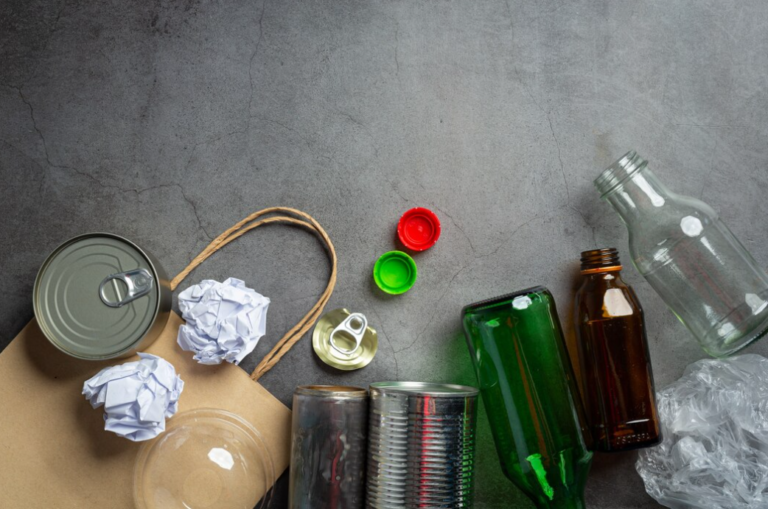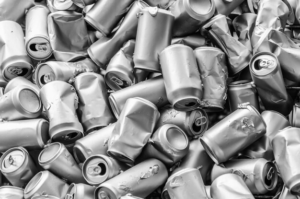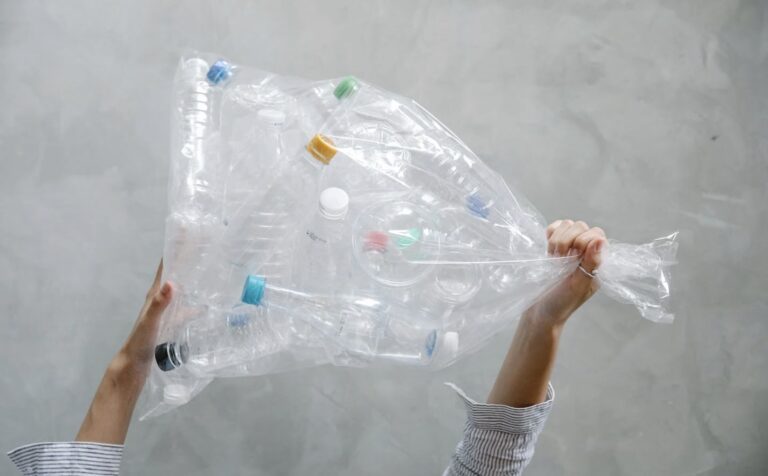Recycling has always been at the forefront of sustainable living. But have you ever stopped to ponder over the dollar signs attached to those discarded plastic bottles? Let’s unravel the mystery and dive deep into the lucrative world of recycling plastic bottles.
The Economics of Recycling Plastic Bottles
The Basics of Bottle Returns
In states with bottle return laws, you might earn anywhere from 5 to 10 cents for each bottle you recycle. For instance, if you’ve hoarded 100 bottles over a month, you could be looking at an easy $5-$10 just for being eco-friendly.
Bulk Recycling Efforts
Beyond individual returns, several organizations buy plastic waste in bulk. Ever imagined gathering a truckload of bottles? That’s where the real money begins to pour in!
Recycling Centers and Their Rates
Different centers offer varied rates based on the quality and quantity of plastic. By fostering a good relationship with local recycling centers, you can ensure consistent earnings.
Factors Determining the Value of Recycled Bottles
- Type of Plastic. Not all plastics are created equal! PET plastics, often used in soda bottles, generally fetch higher prices than other types;
- Condition of the Plastic. Clean, clear bottles without labels are the gold standard in recycling. They can fetch a higher price than those with residue or coloration;
- Market Demand. Like all commodities, plastic recycling prices fluctuate based on demand. Staying updated on market trends can give you an edge in maximizing profit.
The Environmental Payoff
Reduced Carbon Footprint
Every bottle recycled means one less in the landfill. This simple act can substantially decrease harmful emissions over time.
Conservation of Resources
Recycling ensures we use fewer raw materials. This not only saves on costs but also conserves the environment.
Maximizing Profits: Pro Tips
- Collaborate with Communities. Join local clean-up groups or initiate a neighborhood collection drive. More bottles mean more money;
- Educate & Advocate. Spread the word about the financial benefits of recycling. A well-informed community can lead to increased collection and profits;
- Innovative Upcycling. Instead of selling all your collected plastic, consider upcycling. Create art or functional items and sell them for a profit.
The Global Perspective on Plastic Recycling
Comparative Earnings: U.S. vs. Other Countries
While recycling can be profitable in the U.S., some countries, due to economic and environmental policies, might offer even better rates.
International Recycling Ventures
Partnering with international recycling ventures can open doors to greater profitability. Dive into the research and explore global opportunities.

Alternative Recycling Ventures: Beyond Plastic Bottles
Cashing in on Cans
Have you ever wondered, how much money can you make recycling cans? Just like plastic bottles, aluminum cans represent another lucrative recycling avenue.
Benefits:
- Aluminum cans are lightweight, making them easy to collect in large quantities;
- They are universally recyclable, meaning they can be processed and returned to store shelves as new cans in as little as two months;
- Aluminum retains its quality through repeated recycling, so every recycled can is a step towards sustainability.
Earnings: The average payout rate is about $0.50 per pound. Considering there are approximately 32 cans in a pound, collecting 1000 cans could net you about $15.50!
Electronics
As technology evolves, we’re constantly upgrading to newer gadgets, leaving a trail of old electronics. But did you know how to make money recycling electronics?
Why Recycle Electronics?
- Environmental Impact: Electronics are filled with harmful chemicals. Recycling them ensures these chemicals don’t leach into our environment;
- Valuable Materials: Many electronics, especially smartphones and computers, contain precious metals like gold and silver. This makes them particularly valuable to recycle.
Approximate Earnings from Electronic Items
| Electronic Item | Average Recycling Value |
|---|---|
| Cell Phone | $5 – $50 |
| Laptop | $10 – $100 |
| Printer | $5 – $20 |
Computer Recycling
How to make money recycling computers is a question that many eco-conscious individuals are starting to ask. Computers, with their plethora of components, offer multiple opportunities for earning.
Parts with Value:
- Central Processing Units (CPUs): These can contain precious metals like gold, making them a hot commodity in recycling;
- Random Access Memory (RAM): Older sticks of RAM, especially those with gold traces, can fetch a good price;
- Hard Drives: While the data on them is invaluable, the drives themselves have recyclable metals.
Tips for Computer Recycling:
- Always wipe your data. Before recycling, ensure that your personal information is secure;
- Consider selling functional components separately. Some parts might fetch a higher price on their own than as part of the whole computer;
- Stay updated on market prices. Just like any commodity, the value of computer components can fluctuate.
The Social Impact of Recycling
Empowering Communities Through Recycling Programs
Recycling isn’t just about individual efforts or profit margins. When whole communities come together, the impact is amplified tenfold. Many neighborhoods and cities have begun to recognize the potential of organized recycling programs, not just for the environment but for societal upliftment too. Initiating and participating in community-driven recycling ventures can provide employment opportunities, especially in regions where job prospects are limited. Such programs also foster a sense of unity and shared responsibility among community members.

Educational Opportunities in Recycling
Integrating Recycling into Curriculum
The importance of recycling isn’t just a topic for environmentalists; it’s a lesson for future generations. Schools and educational institutions are now seeing the merit in integrating recycling and sustainability into their curricula. By doing so, students not only learn the mechanics of recycling but also develop a deep-seated respect and understanding for the environment.
Such programs often begin with basic knowledge about different recyclable materials and extend to hands-on activities, like field trips to recycling plants. These trips provide invaluable exposure, allowing students to witness the journey of their everyday waste products. Beyond just theory, students understand the tangible impact of their actions, making them more inclined to recycle.
Furthermore, when children are educated about the financial benefits associated with recycling, like “how much money can you make recycling cans” or “how to make money recycling electronics,” it presents a dual motivation – the betterment of the environment and a personal financial incentive.
Integrating recycling education also paves the way for innovation. With technology advancing rapidly, there’s always a need for sustainable solutions. Today’s students, equipped with knowledge and passion for recycling, might just be the pioneers of green solutions in the future.
The Broader Picture: National Recycling Initiatives
Across the nation, there’s an increased awareness about the urgency to embrace sustainable practices. Governments, businesses, and non-profits are collaborating to foster national recycling initiatives.
Public and Private Partnerships
Public and private sector collaborations have become the backbone of some of the most successful recycling programs. Such partnerships leverage governmental policy-making and oversight with the efficiency and innovation of the private sector. The synergy results in large-scale recycling projects that might otherwise be impossible to execute.
Breaking Down the Materials: What’s in Our Waste?
To truly appreciate the potential of recycling, it’s vital to understand the composition of the waste we generate daily.
Common Waste Materials and Their Share
| Waste Material | Percentage in Household Waste |
|---|---|
| Organic Waste (food) | 45% |
| Plastic | 12% |
| Paper | 25% |
| Glass | 8% |
| Metals (like aluminum) | 5% |
| Others (e-waste, wood) | 5% |
This table underscores the need for holistic recycling – focusing on more than just plastic or cans but extending efforts to other significant portions like organic waste and paper.
Environmental Benefits: Beyond the Monetary
Sure, you’ve understood “how much money can you make recycling cans” or the economic gains from recycling electronics. But the environmental benefits, although not always quantifiable in dollar terms, are profound.
Carbon Emission Reductions
Each item recycled means one less item produced from raw materials. This simple act significantly reduces the carbon footprint, as recycling usually consumes less energy compared to producing items from scratch. Over time, collective recycling can lead to a substantial decrease in global carbon emissions.
Conservation of Natural Resources
Every can or bottle recycled is a direct reduction in the need to extract raw materials. Be it bauxite for aluminum cans or the petroleum derivatives for plastics, recycling helps preserve our planet’s precious resources.
Protecting Natural Habitats
Large scale extraction of raw materials can lead to deforestation and habitat destruction. As we recycle more, the demand for such aggressive extraction diminishes, indirectly preserving the habitats of countless species.
Reduced Landfill Pressure
Landfills are overflowing, and the environmental strain they cause is concerning. By recycling, we can drastically reduce the waste that goes into landfills, mitigating the environmental challenges they pose.

The Global Perspective: Recycling Around the World
The push for recycling isn’t limited to one nation or region; it’s a global movement. Countries worldwide are recognizing the urgent need to manage waste and are taking innovative steps to promote and incentivize recycling.
Leading Countries in Recycling
Certain nations have set exemplary standards in recycling, creating models that others can emulate.
Recycling Rates of Top Performing Countries
| Country | Recycling Rate (%) | Notable Initiatives |
|---|---|---|
| Germany | 56.1% | Green Dot system, incentivizing manufacturers. |
| South Korea | 53.8% | Volume-based waste fee system to reduce waste. |
| Slovenia | 53.4% | Extensive curbside recycling programs. |
| Austria | 53.3% | Strong emphasis on separating waste at the source. |
| Belgium | 52.4% | Advanced Extended Producer Responsibility (EPR) policies. |
These countries have integrated recycling into their societal fabric, emphasizing education, incentives, and regulations.
Emerging Innovations in Global Recycling
Around the world, innovations in recycling technology and strategy are making it easier, more efficient, and more lucrative:
- Reverse Vending Machines: In many countries, machines are set up in public places where people can deposit used plastic bottles and cans. In return, they receive a small monetary reward, an instant incentive for recycling;
- AI-Powered Waste Sorting: Advanced AI systems equipped with cameras are being deployed in waste management facilities. These systems can identify and sort recyclable materials with high accuracy, speeding up the process and reducing human labor;
- Eco-Bricks: In regions where recycling infrastructure is less developed, there’s a rise in creating eco-bricks. These are plastic bottles stuffed with non-biodegradable waste, which are then used as building materials.
Conclusion
Recycling plastic bottles is not just an eco-friendly endeavor but can also be a pocket-friendly one. Whether you’re an individual or a community, there’s potential to make money while making a positive impact on our planet. So, the next time you see a discarded plastic bottle, think of it as a coin waiting to be picked up!
Frequently Asked Questions
Depending on the state and the current market rate, you could earn anywhere between $50 to $100 from recycling 1000 bottles.
No, different centers might have preferences based on the type and condition of plastic. It’s always good to check in advance.
No, upcycling and repurposing can also be lucrative, especially if you can create sought-after items or art.
Research online or connect with local recycling centers to stay updated on the current rates.
Absolutely! With the right strategies, connections, and market research, you can turn recycling into a profitable business venture.








+ There are no comments
Add yours